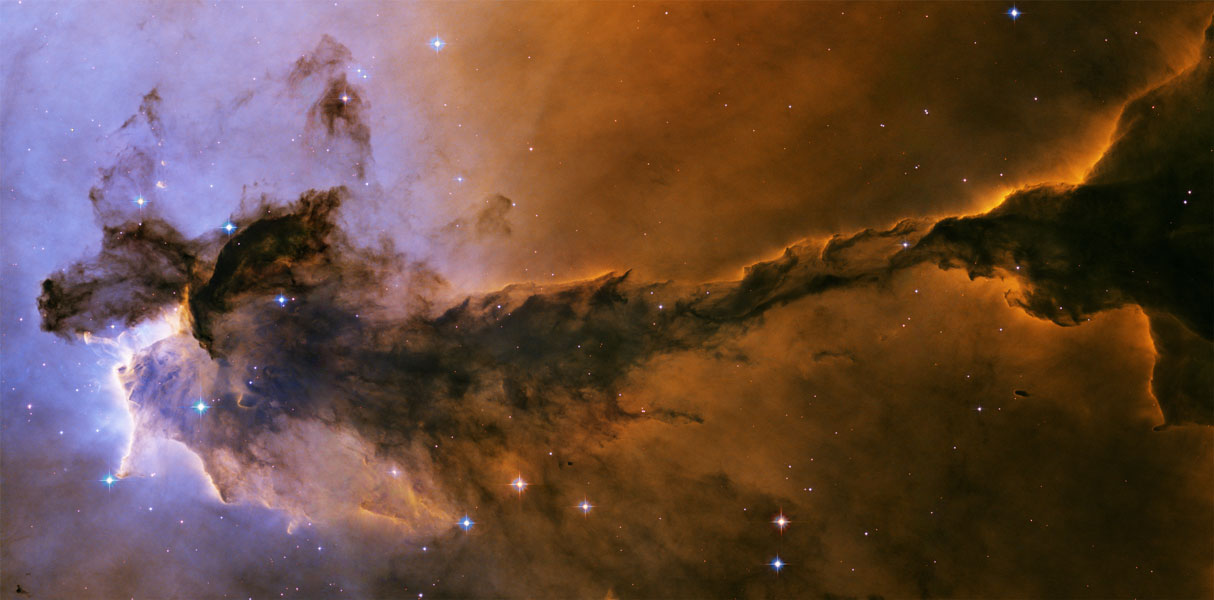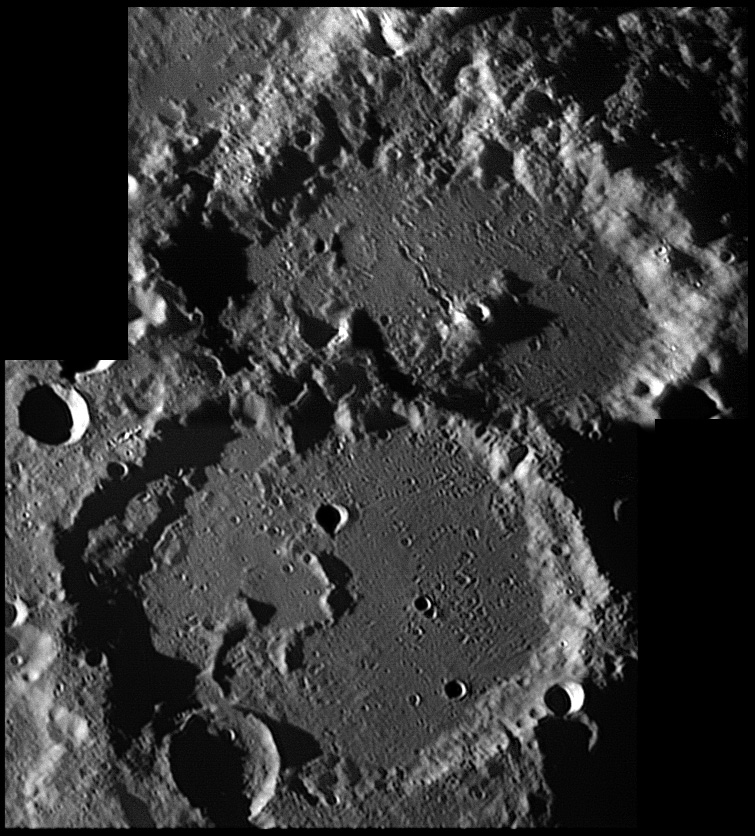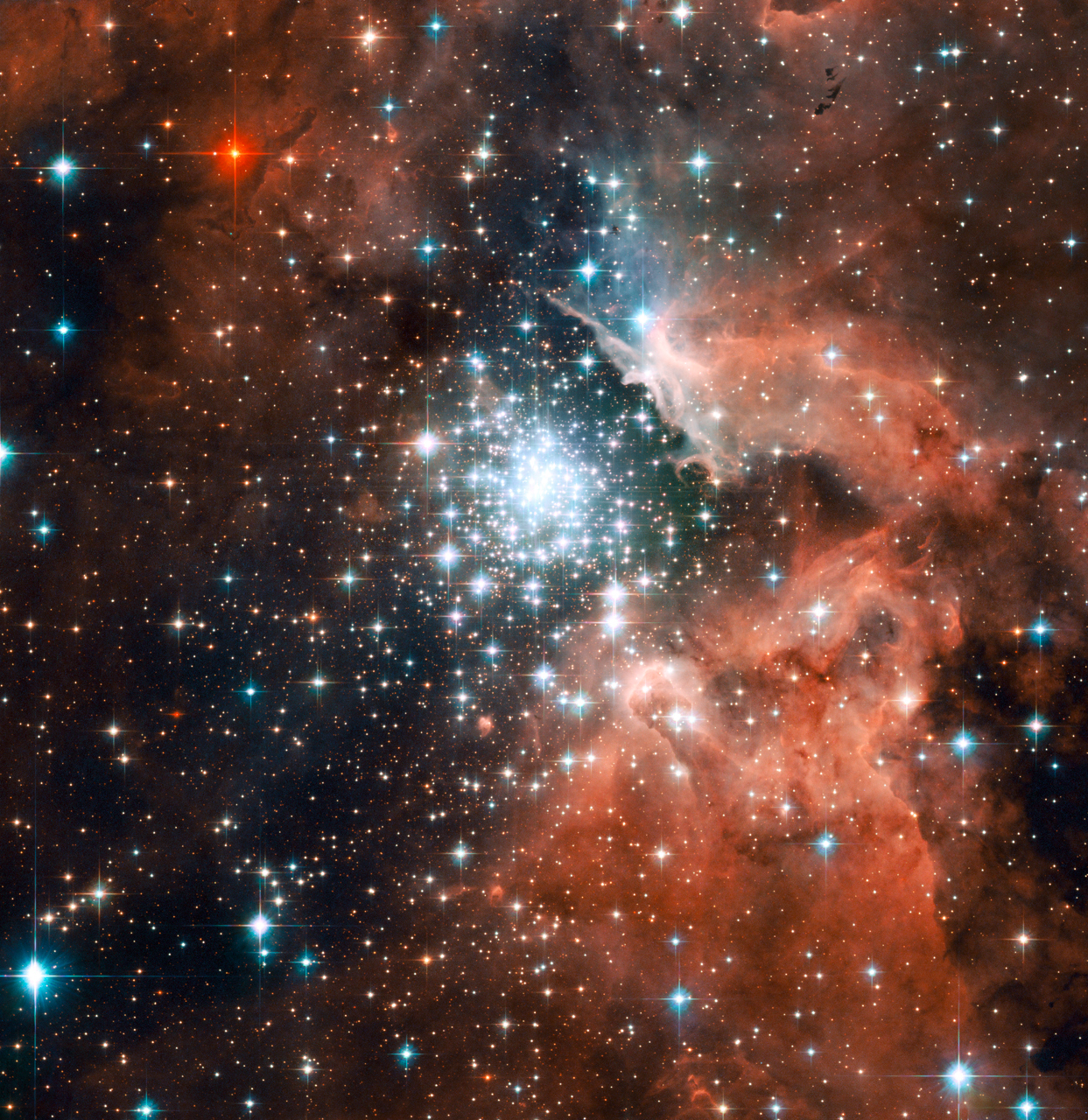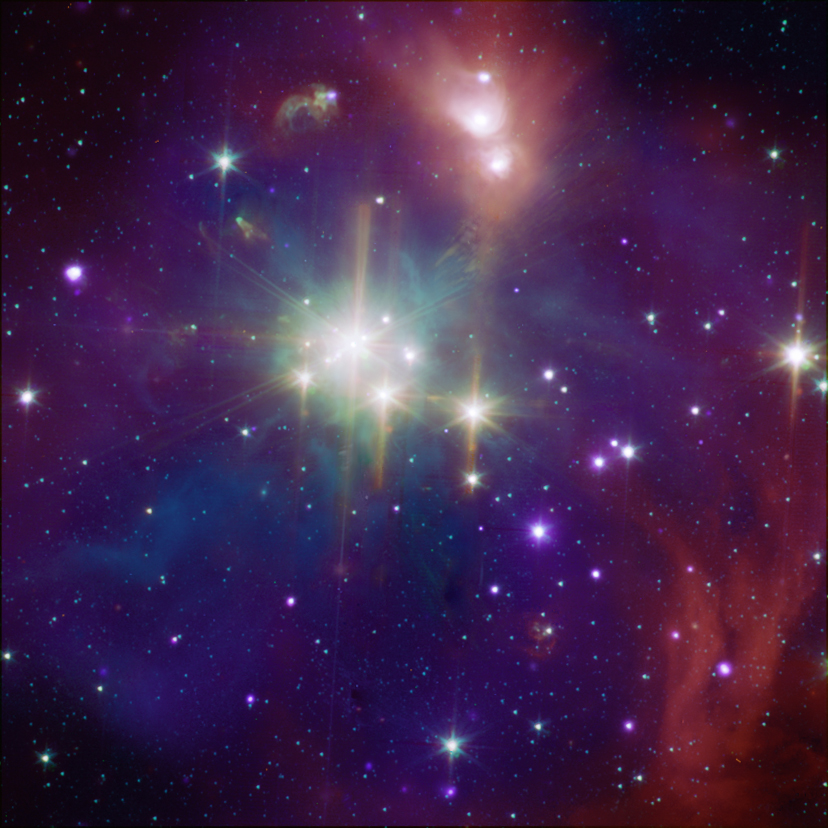
Friday, December 21, 2007
2.9 Unusual Silica Rich Soil Discovered on Mars

Friday, December 14, 2007
2.8 The Fairy of Eagle Nebula
Friday, December 7, 2007
2.7 M74: The Perfect Spiral
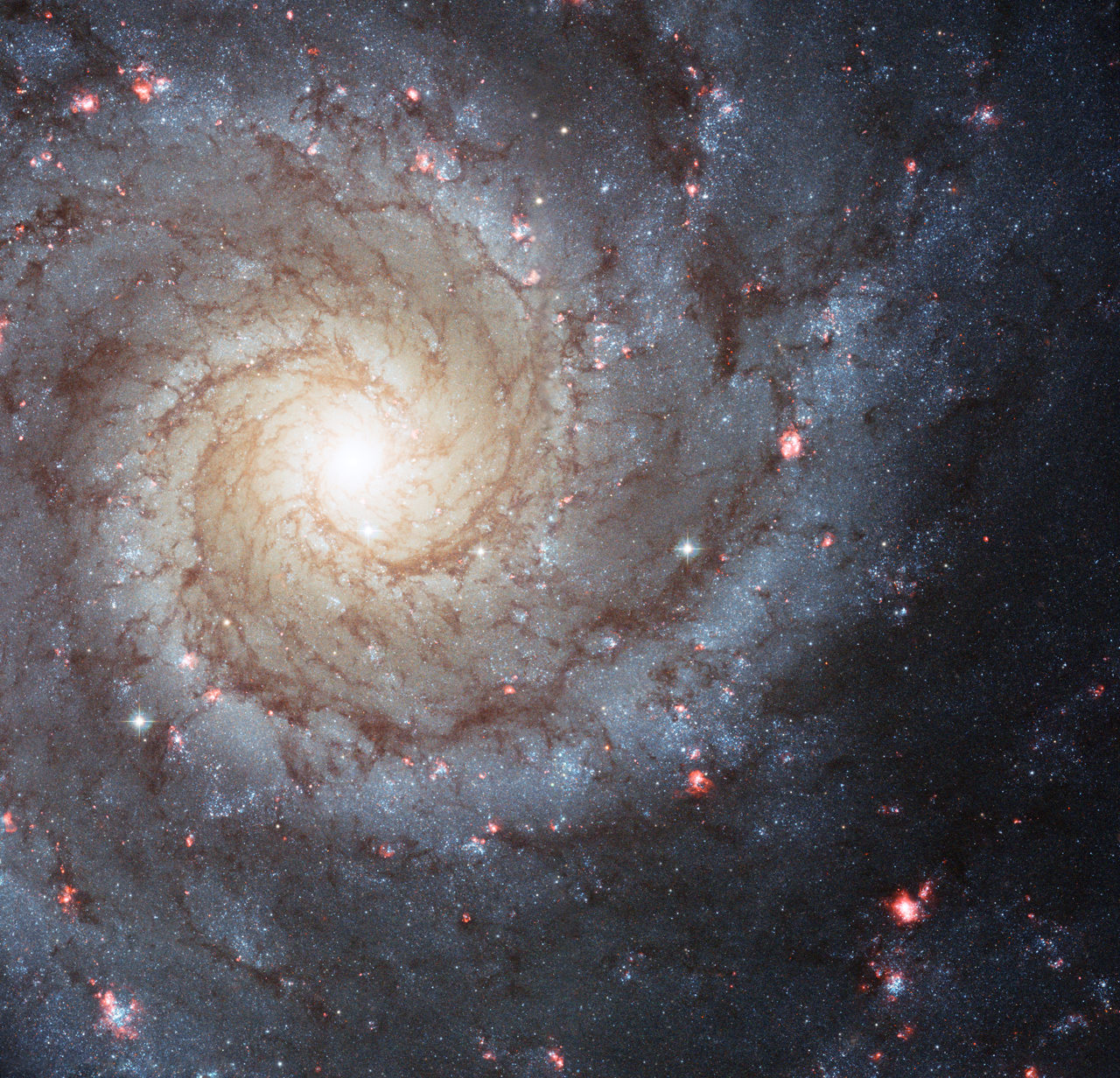 Here is M74, one of the most photogenic spiral galaxies. M74 is an island universe composed of 100 billion stars that lies 32 light-years away in the constellation Pisces. The spiral arms are traced by blue star clusters and dark cosmic dust lanes. The red spots throughout the image are the star forming regions and are red due to Hydrogen gas. This image spans 30,000 light-years across the galaxy.
Here is M74, one of the most photogenic spiral galaxies. M74 is an island universe composed of 100 billion stars that lies 32 light-years away in the constellation Pisces. The spiral arms are traced by blue star clusters and dark cosmic dust lanes. The red spots throughout the image are the star forming regions and are red due to Hydrogen gas. This image spans 30,000 light-years across the galaxy.Friday, November 30, 2007
2.6 Stardust in Perseus
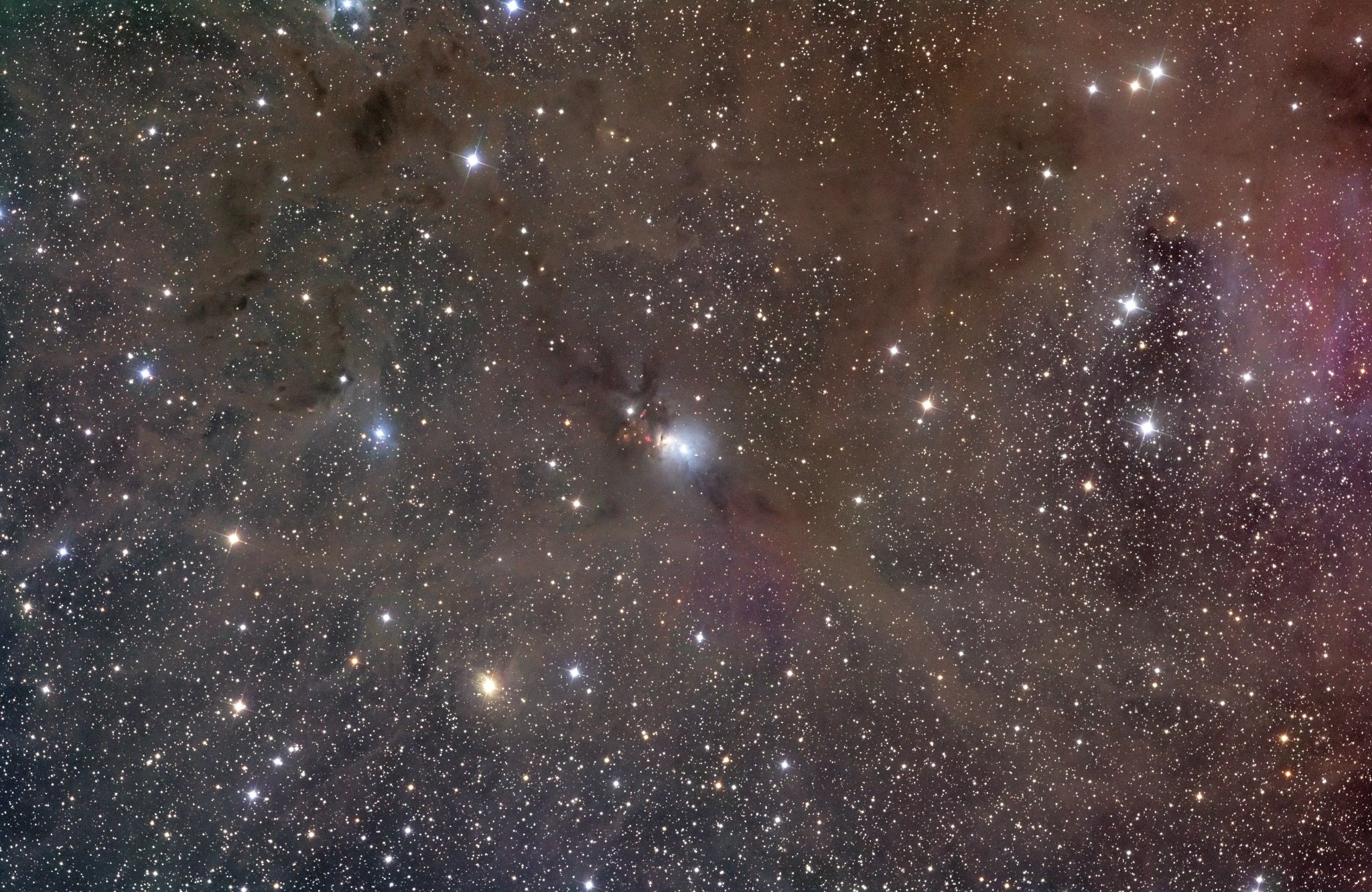 In the constellation Perseus, this cloud of dust covers nearly 4 degrees on the sky. NGC 1333 is in the center of the picture, colored a dusty blue. It rests some 1,000 light-years away. At that distance, the field of view is estimated to be 70 light-years across, a truly massive distance. Several dark dust nebulae as well as the reddish glow of Hydrogen gas can be seen on the outskirts of the dust cloud.
In the constellation Perseus, this cloud of dust covers nearly 4 degrees on the sky. NGC 1333 is in the center of the picture, colored a dusty blue. It rests some 1,000 light-years away. At that distance, the field of view is estimated to be 70 light-years across, a truly massive distance. Several dark dust nebulae as well as the reddish glow of Hydrogen gas can be seen on the outskirts of the dust cloud.Friday, November 16, 2007
2.5 The Crescent Nebula

The Crescent Nebula was created by the brightest star in its center and began forming nearly 250,000 years ago. The central star is a Wolf-Rayet star that sheds its outer envelope and ejects the equivalent mass of our Sun every 10,000 years. It is nearly 4,700 light-years in the constellation Cygnus. The central star will likely undergo a supernova explosion in the next million years.
Friday, November 9, 2007
2.4 Observation Log
Time: 7:00-9:00
Location:270 15' 41.46" N, 820 24' 48.71" W; Field behind Suncoast Community church on Hawkins Road
Sky Conditions: Very clear. Some light pollution.
Instruments: Binoculars, Telescope
Planets: Jupiter
Bright Stars Noted: Altair, Vega, Deneb, Arcturus, Fomalhaut, Aldebaran
Constellations Noted: Sagittarius, Ophiuchus, Aquila, Lyra, Capricornus, Cygnus, Cassiopeia, Cepheus, Andromeda, Hercules, Perseus, Scorpius, Sagitta, Delphinus, Scutum, Pegasus
Binary Stars: Epsilon Lyrae, Gamma Andromeda, Polaris, Alpha Capricorn
Deep Sky Objects: M57, M45, Hyades, M27
Other: Comet Holmes
2.3 Comet Holmes Grows a Tail
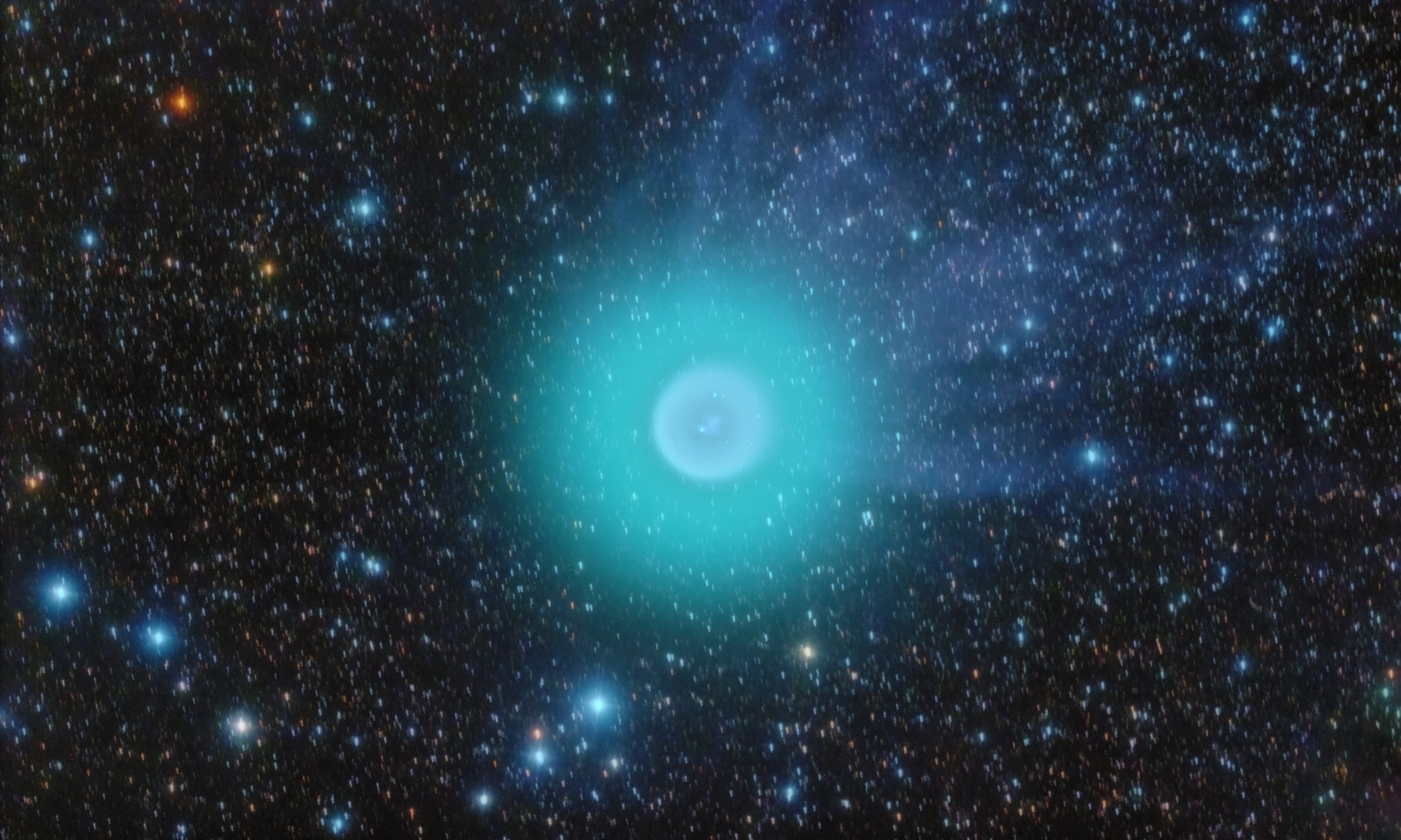
Friday, November 2, 2007
2.2 The Great Carina Nebula
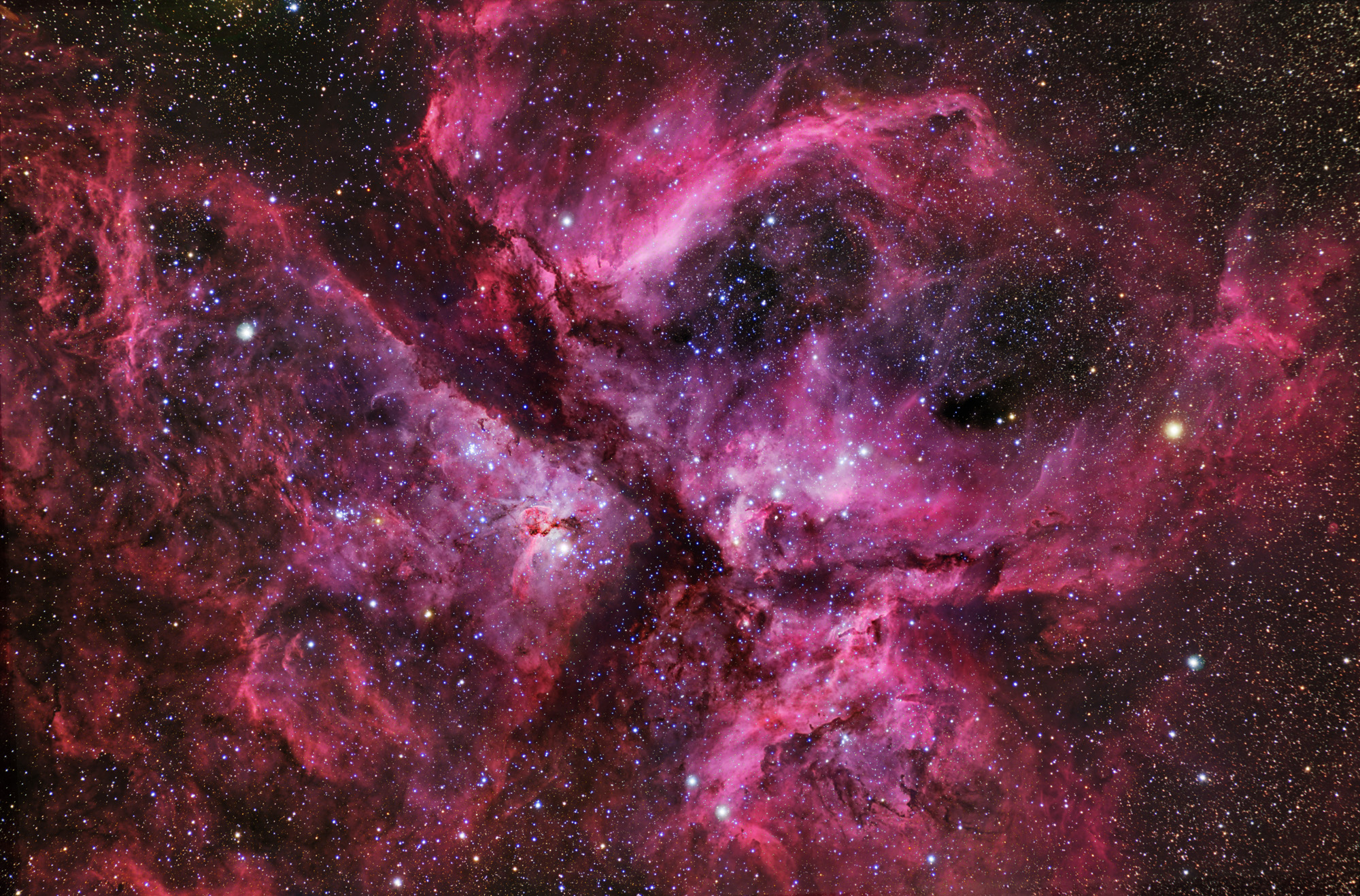 The Carina Nebula, or NGC 3372, is one of our galaxy's largest star forming regions. It is easily visible to the naked eye although it is nearly 7,500 light-years away. This reveals the region's glowing filaments of interstellar gas and dark cosmic dust clouds. It is home to some extremely massive stars, such Eta Carinae, which is nearly 100 times larger in mass than the Sun.
The Carina Nebula, or NGC 3372, is one of our galaxy's largest star forming regions. It is easily visible to the naked eye although it is nearly 7,500 light-years away. This reveals the region's glowing filaments of interstellar gas and dark cosmic dust clouds. It is home to some extremely massive stars, such Eta Carinae, which is nearly 100 times larger in mass than the Sun.
Friday, October 26, 2007
2.1 Victoria Crater on Mars
 This is the largest crater ever visited by robots on Mars. Although the robot Opportunity has been at the edges of the crater for more than a year, it was forced to wait for a safe path due to massive dust storms. It is hoped that the Victoria Crater will show several layers of rock created at impact, giving scientists clues about the ancient history of the surface of Mars.
This is the largest crater ever visited by robots on Mars. Although the robot Opportunity has been at the edges of the crater for more than a year, it was forced to wait for a safe path due to massive dust storms. It is hoped that the Victoria Crater will show several layers of rock created at impact, giving scientists clues about the ancient history of the surface of Mars.Friday, October 12, 2007
1.12 Observation Log
Time: 7:30-9:00
Location:270 15' 41.46" N, 820 24' 48.71" W; Field behind Suncoast Community church on Hawkins Road
Sky Conditions: Relatively clear. Considerable light pollution near West.
Instruments: Binoculars, Telescope
Planets: Jupiter
Bright Stars Noted: Altair, Vega, Deneb, Arcturus, Fomalhaut, Antares
Constellations Noted: Sagittarius, Ophiuchus, Serpens Cauda, Serpens Caput Aquila, Lyra, Capricornus, Cygnus, Cassiopeia, Cepheus, Andromeda, Hercules, Scorpius, Sagitta, Delphinus, Scutum, Pegasus, Corona Borealis (Only one star visible)
Binary Stars: Epsilon Lyrae, Albireo
Deep Sky Objects: M13, M8, M11, M57, M31
Other: Jupiter's four moons
1.11 Galaxy NGC 474
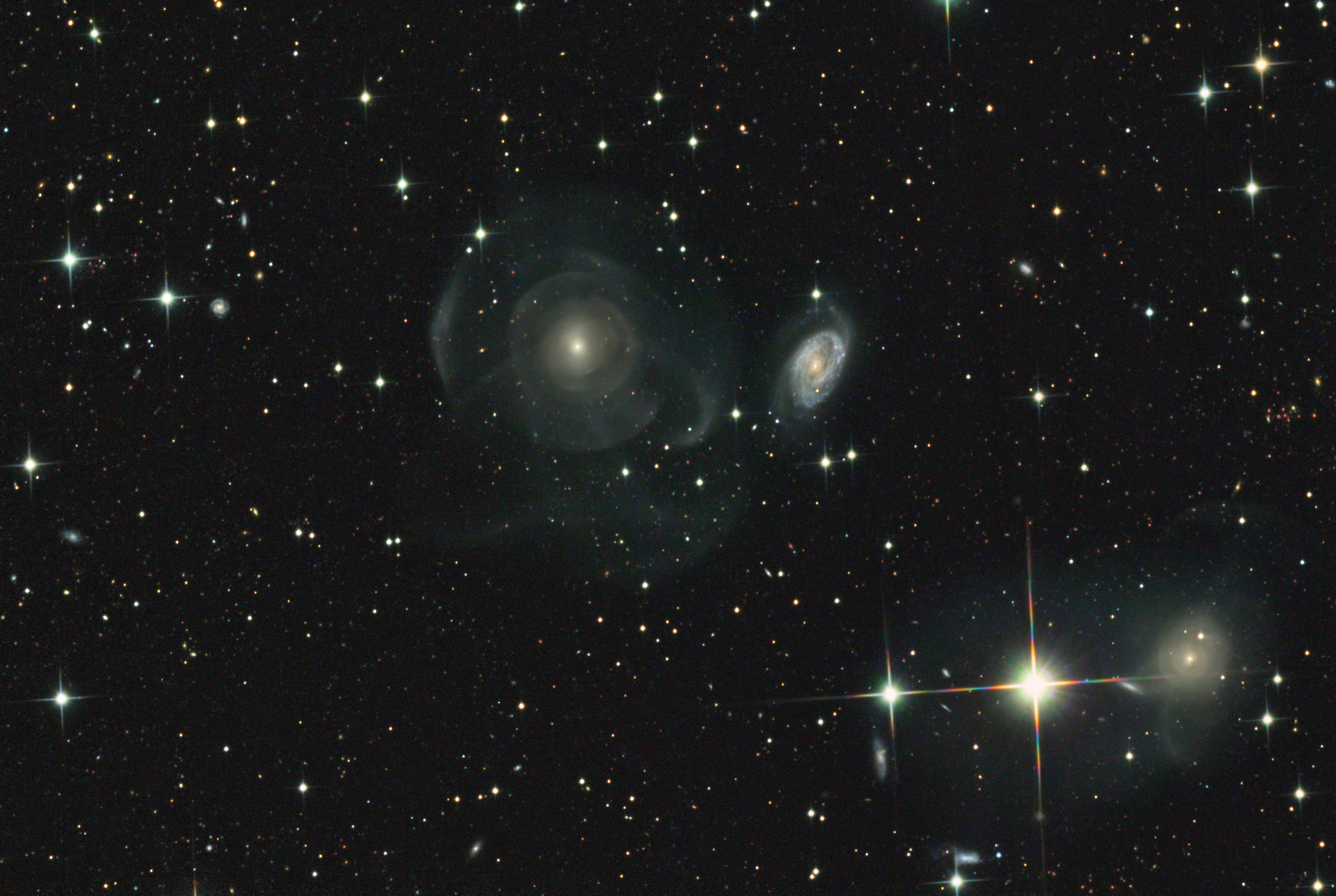
Galaxy NGC 474 has been undergoing some strange changes in appearance, mainly do to the shells that have developed around it. These shells are likely tidal tails related to debris left over from the absorption of numerous small galaxies over the past billion years. It is also possible that its adjacent galaxy is causing density waves to ripple through this massive galaxy. This picture supports the idea that the outer halos of large galaxies are not smooth, but rather complex due to their interaction with other, smaller galaxies.
Wednesday, October 10, 2007
1.10 Pictures related to Peuerbach Biography
1.9 The Life and Times of Georg von Peuerbach
Mr. Percival
Astronomy Honors
10 Oct. 2007
Georg von Peuerbach
Considered to be the first modern astronomer, Georg von Peuerbach contributed greatly to the fields of Astronomy and Mathematics during the Late Middle Ages. Born the son of Ulrich Aunpekh in 1423, he grew up in the small Austrian town of
Regiomontanus first began collaborating with Peuerbach in 1453 when he was sixteen years old. Until Peuerbach’s death eight years later, they collaborated extensively, resulting in several important astronomical observations and publications. In 1454, Peuerbach published his first work, Theoricae Novae Planetarum, which presented Ptolemy’s complicated epicycle theory in a simple, but thorough manner. Peuerbach believed that the planets were in solid crystalline spheres, yet believed that their motions were controlled by the Sun. This work, Peuerbach’s most important, was an attempt to bring together Aristotelian and Ptolemaic theory, causing Peuerbach’s work to remain the basis of academic instruction in Astronomy until Copernicus. This publication demonstrates that Peuerbach used techniques developed by Islamic astronomers in modifying Ptolemy’s model. Additionally, Peuerbach observed what came to be known as Halley’s Comet and recorded his observations in 1456. He would make several other observations of comets throughout his life. In 1457, Regiomontanus and Peuerbach observed a lunar eclipse, measuring its duration and the time of the midpoint. It was found that the eclipse occurred eight minutes earlier than previously calculated tables predicted. Due to this discrepancy, Peuerbach produced a new collection of tables of eclipse calculation which he completed in 1459. When he observed several eclipses the following year, he compared their times to his predictions, which showed tremendous accuracy. Many of his astronomical observations were made at the Observatory of Varadinum in
Due to the inextricable link between astrology and Astronomy during the Middle Ages, Peuerbach’s reputation earned him the prestigious position of court astrologer for King Ladislas V of
Despite his short life, Georg von Peuerbach accomplished much for both the fields of Astronomy and Mathematics. He published twenty known works and greatly influenced the ideology of the time in regards to planetary motion. His pupil, Regiomontanus, became a successful astronomer in his own right, largely due to the teaching and mentoring of Peuerbach. Furthermore, his works in Trigonometry and Geometry are extremely important. In fact, Peuerbach is credited with being one of the first to introduce sines into Trigonometry. Peuerbach’s many scientific and mathematic achievements have created him a noteworthy legacy as the first modern astronomer. It is because of this legacy that the Purbach crater on the Moon carries his namesake.
Bress, Thomas. "George von Peuerbach." The Catholic Encyclopedia. 1911. Robert Appleton Company. 10 Oct 2007
Knight, Judson. "Georg von Peuerbach." Science and Its Times. Ed. Neil Schlager and Josh Lauer. Vol. 2: 700 to 1449.
O'Connor, J. "Georg Peurbach." 01 Aug 2006.
Friday, October 5, 2007
1.8 Starburst Cluster in NGC 3603
Thursday, October 4, 2007
1.7 Observation Log
Sky Conditions: Quite Cloudy, major cloud movement every 4 to 5 minutes. Heat lightning was relatively constant.
Instruments: Binoculars (Nikon Travelite II, 9-25 maginification)
Planets: Venus, Jupiter!
Bright Stars Noted: Nunki, Altair, Vega
Constellations Noted: Sagittarius (Barely), Ophichus, Serpens Cauda, Aquila, Lyra, Capricornus, Part of Aquarius (I think, there was a cloud in the way)
Binary Stars: Epsilon Lyrae. It looked like a really wide star, so I assumed that's what it was.
Deep Sky Objects: None Noted
Other:None
Note: I might have seen several deep sky objects because there were many fuzzy items within a few constellations. However, the binoculars I have are older than I am and were not able to focus on them to distinguish their nature.
Friday, September 28, 2007
1.6 A Galactic Star Forming Region in Infrared
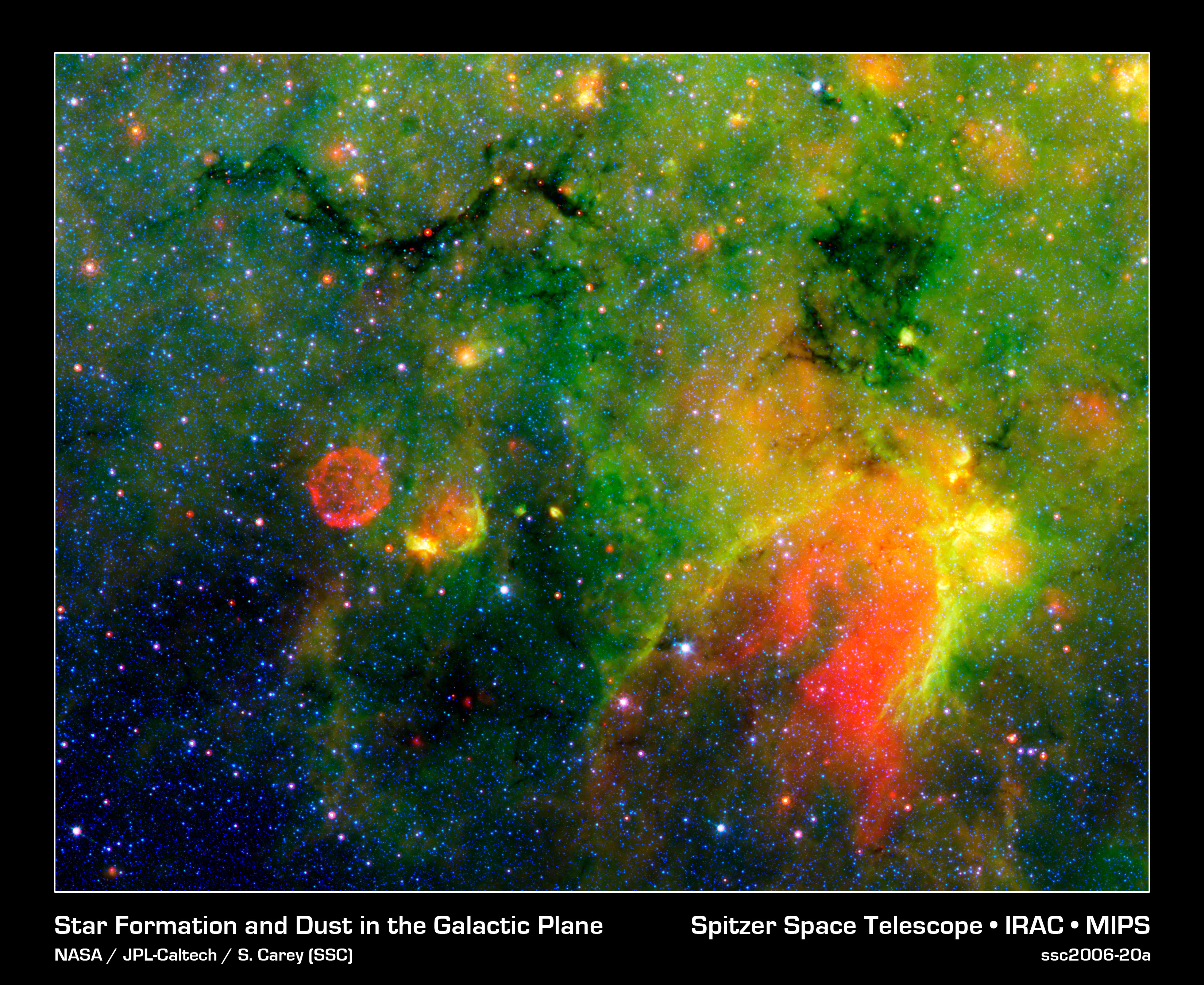
Friday, September 21, 2007
Friday, September 14, 2007
1.4 NGC 7129 and NGC 7142
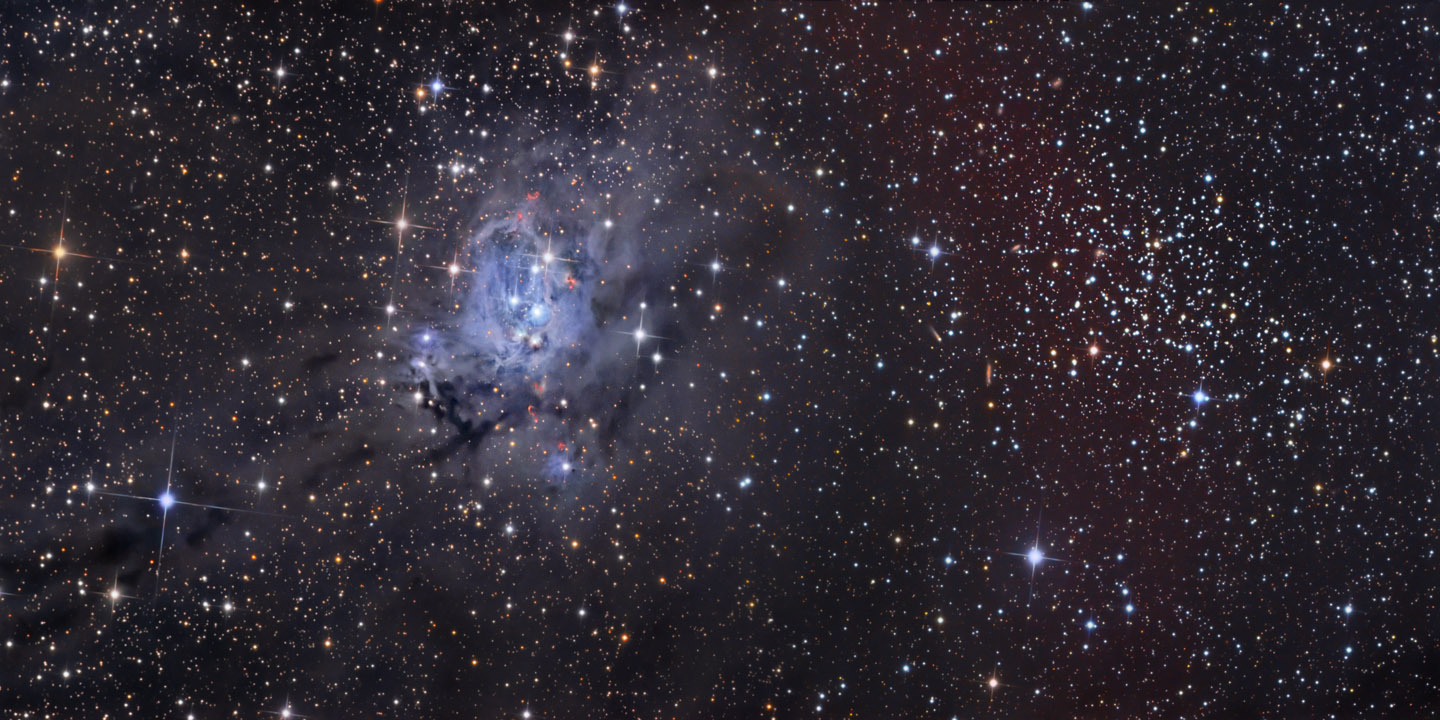
In the constellation Cepheus, NGC 7129 and NGC 7142 are visible. They are reflection nebulae and appear to be separated by about half a degree. NGC 7129 is about 3,000 light years away whereas NGC 7142 is approximately 6,000 light years away. NGC 7129 is toward the left of the image and the red crescents within it are 'energetic jets' from newborn starts. NGC 7142 is to the right and the foreground dust clouds redden the light emitted from the stars, making it difficult to study in many cases.
Friday, September 7, 2007
1.3 Observation Log
Time: 8:40 - 9:40
Place: 270 15' 29.35" N, 820 23' 44.36" W; My Home
Sky Conditions: Mostly clear. Mostly high clouds staying in relatively the same location.
No instruments used
Planets: None
Bright Stars noted: Vega (near the center), Antares (in the southern part of the sky, relatively close to the horizon)
Constellations noted: Draco, Cassiopeia, Scorpio, Lyra
Binary Stars: None noted
Deep Sky Objects: None noted
Other: One Meteor visible at about 9:04, visible for about 2 seconds
One Satellite visible at about 9:20, visible for about 5-6 seconds
Note: The guide I used tonight was incorrect and, thus, limited my ability to identify objects. I'll be able to observe more next time.
1.2 Colorful Clouds of Rho Ophiuchi
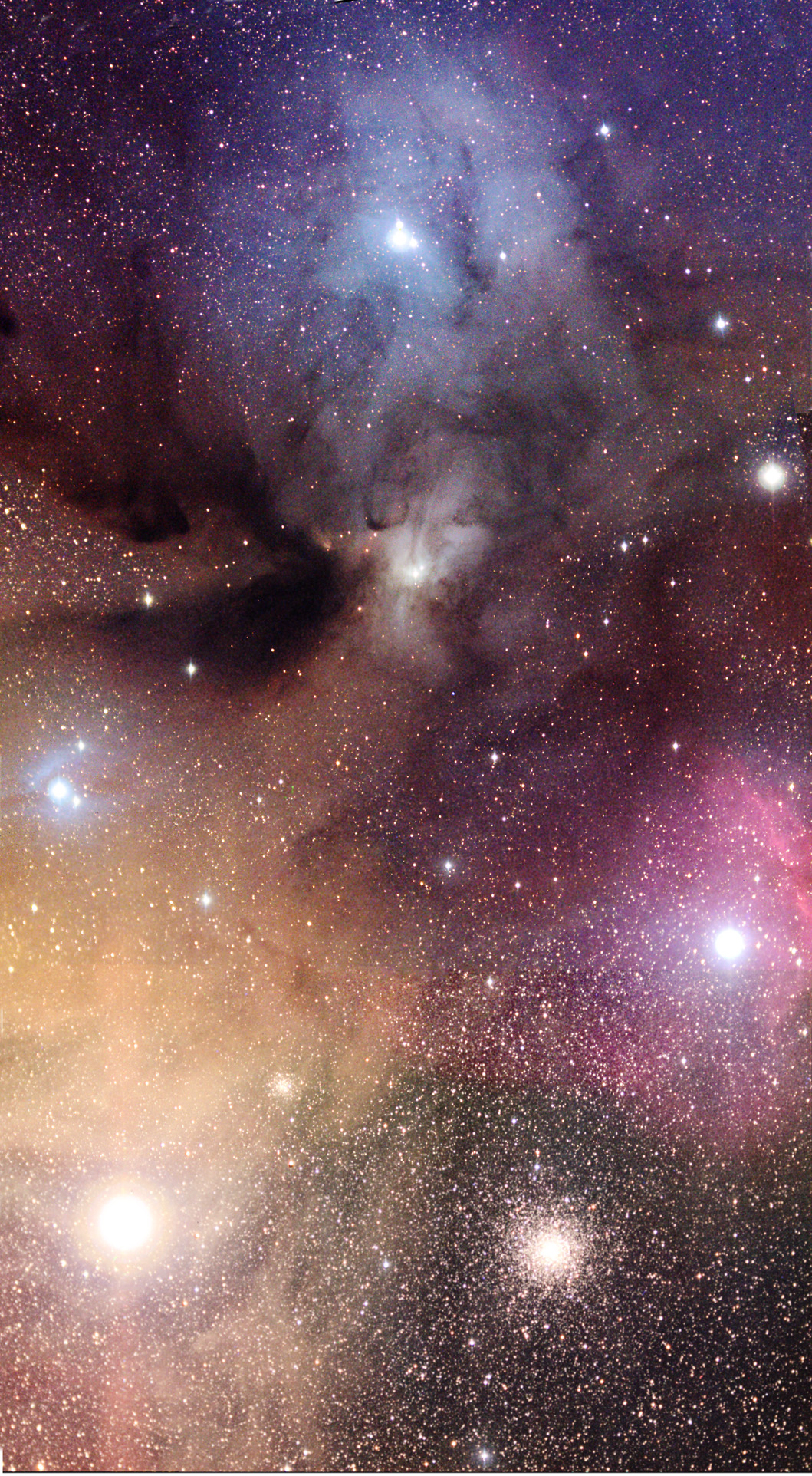 The Rho Ophiuchi is surrounded by blue light, which occurs mainly due to reflected light. The yellow and red regions are due to the emission from the nebula's atomic and molecular gas. The dark regions are caused by dust grains, which block light emitted behind them. The M4 cluster is visible in the bottom right of the picture and emits the most colorful light, from nearly every wavelength, so not all of it can be seen with the naked eye.
The Rho Ophiuchi is surrounded by blue light, which occurs mainly due to reflected light. The yellow and red regions are due to the emission from the nebula's atomic and molecular gas. The dark regions are caused by dust grains, which block light emitted behind them. The M4 cluster is visible in the bottom right of the picture and emits the most colorful light, from nearly every wavelength, so not all of it can be seen with the naked eye.Friday, August 31, 2007
1.1 Lunar Eclipse
 This is a picture of the Lunar eclipse that occurred earlier this week and was visible from North America and part of the Pacific region. The eclipse was somewhat long and, according to NASA, lasted nearly 90 minutes. This photograph was taken over Yass, Australia. The moon appears red because it is reflecting light filtering into Earth's shadow. Several of the moon's larger craters are visible as well.
This is a picture of the Lunar eclipse that occurred earlier this week and was visible from North America and part of the Pacific region. The eclipse was somewhat long and, according to NASA, lasted nearly 90 minutes. This photograph was taken over Yass, Australia. The moon appears red because it is reflecting light filtering into Earth's shadow. Several of the moon's larger craters are visible as well.
